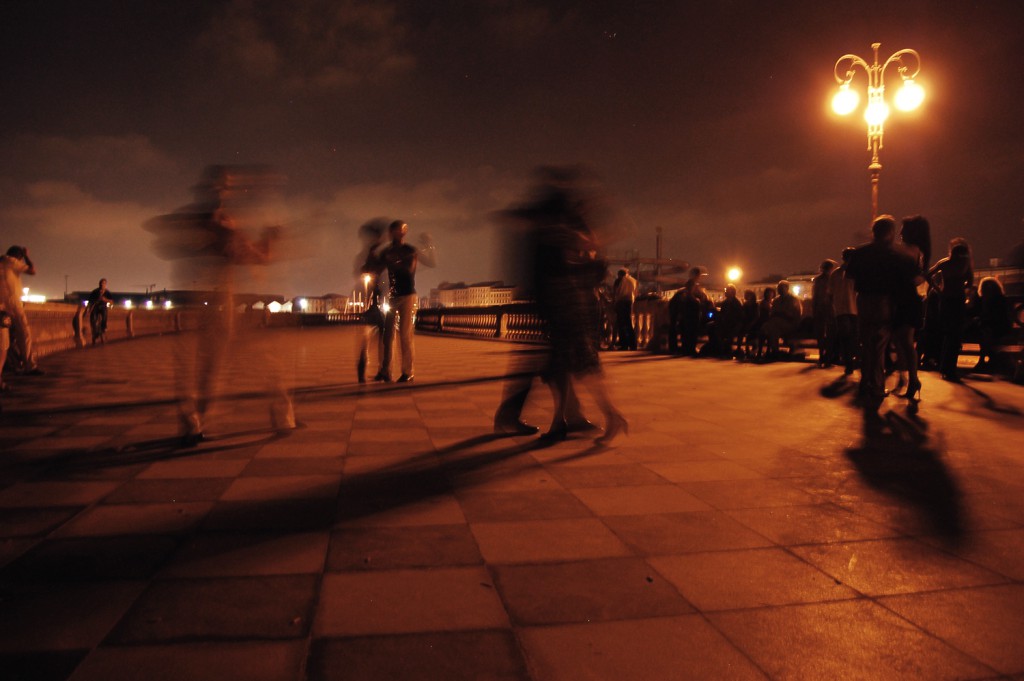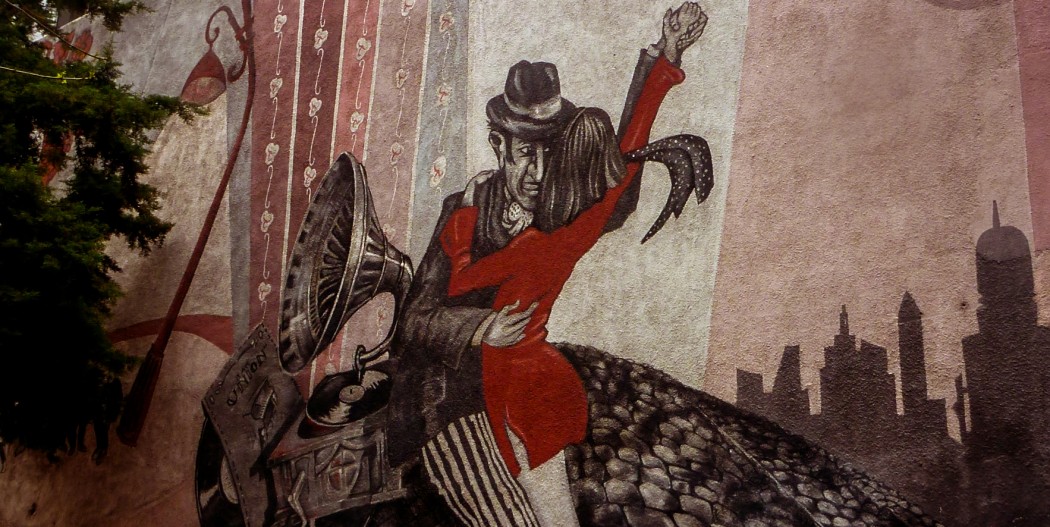Walking the Walk: Tango in the Barrios of Buenos Aires
No matter which country or culture we visit, everyone shares a bodily structure that makes us fundamentally human. From the moment we are born, we instinctively reach out into the world and begin to interact with it through movement. Prior to learning language and fully developing our logical mind, our body offers us a unique communication channel.
It had been my lifelong dream to spend at least a month living in Buenos Aires, learning Spanish and dancing as much tango as my feet would tolerate. For anyone who has already fallen in love with tango, this is an alluring travel dream. But even for those with different motivations for travel, I would argue that Argentina reveals so much more to those who are tango-curious. To experience the nuances of the dance offers a portal to more fully appreciate the place, the people and the culture.
To dance our way through our travels takes us far beyond our intellect. Around the world and throughout history, an endless variety of movement and dance styles have evolved out of different ways of living, culture and landscapes. The rhythms and dance moves of Kwaito music in South Africa, Maloya music in Reunion Island and traditional Ainu music in Japan are now embedded in my body. In fact, my travel experiences never feel truly authentic until I have joined in on some local moving and grooving.
So, based on the wisdom of my fellow tangueros, I took advantage of discounted monthly accommodation rates in Buenos Aires and settled into a renovated historic warehouse in San Telmo. This was the original port-side Spanish settlement from which the city of Buenos Aires grew. Even today, locals still affectionately refer to themselves as porteños — ‘people of the port’.
On my first explorations of the downtown barrios (suburbs), I was grateful for the regular grid pattern of the streets. Each street had a slightly different look and feel depending on the time of the day or night, the weather and the varied opening hours of bakeries, bookstores, mechanics, gyms, electronics stores, galleries, and museums.
After several city tours, history books and passionate conversations with porteños, I began to appreciate that street names tell the stories of great explorers, leaders, revolutionaries and moments in the history of Argentina. As one travels throughout South America, these stories and their main characters link together to form the history of the entire continent.
For those wondering about the origins of tango, be warned that there are numerous threads to that answer. There are lines of influence from the candombe ceremonies of African slaves and distinctive melodies and movement arising from the working class barrios of Buenos Aires and Montevideo, as well as the effects of the European popularisation of the emerging art form in the early 1900s. Regardless of exactly how all those threads weave together, it is evident that tango isn’t just about the steps and the technique.
Tango is deeply embedded in the urban fabric of Buenos Aires. Tourists typically end up seeing a live show at a restaurant or theatre, or maybe even stumbling upon some informal tango at street level. However, the real world of tango comes alive around midnight. The closed window shutters and doorways on the same streets I explored in the daylight concealed the real world of tango. Behind the uninviting façades I would discover tango music, tango singers, live bands — a multitude of venues, dance floors, formality and legacy.
Numerous websites and guides, such as tangauta.net or landingpadba.com, exist to advertise locations and times for classes, practicas (practices) and milongas (social dancing events). However, some milongas are not even advertised. They are either so well-known that there is no need to advertise, or so exclusive that one can only attend if they know the right people to be invited in the first place. There are long-standing codes of conduct: etiquette to honour, politics to be played out and social webs to be carefully navigated.
At the extreme end of milonga formality, arrangements will have been made in advance for exactly which table each person will be seated at for the best line of sight across the dance floor. Many hours after sunset, I would transform myself into a perfect balance of sophistication and seductiveness. When I locked my front door behind me and the soles of my shoes touched the dusty pavers of that Buenos Aires sidewalk, I’d feel a spark of excitement. I was venturing out into the city’s tango embrace, most likely until the very early hours of the morning.
As I opened that inconspicuous door to the milonga, enchanting tango music would make a grab for my heart-strings and draw me inside. The host would greet me in a flurry of besos (kisses), small talk and introductions before promptly escorting me to my allocated table. For a regular milonguero (dancer), this process would most likely take a lot longer, being greeted as if they were entering the house of old friends.
Everyone is here for the love of tango —whether that is the dance, the music, the company, the history, the experience, or all of the above. It is perfectly acceptable to explain to the host that one is not planning on dancing at the milonga. In fact, many older milongueros do exactly that. The milonga is their life: their social network, their home, their Buenos Aires.
Tango is as much about watching others dance as it is about being watched. In a very traditional milonga venue, friends of the opposite sex may be escorted to the far side of the room. This can be a confronting initiation into the subtle art of eye contact as yet another form of wordless communication in tango.

The cabaceo is an invitation to dance. It occurs when a man makes eye contact with a woman across the room. To accept the offer, she will reply with a subtle nod. Their dance is underway as he crosses the room and extends his arm to lead her to the dance floor. To decline, she will simply avert her gaze back to watching other couples on the dance floor, waiting for the music that resonates with her — or turn back to her conversation with friends.
Once on the dance floor, entering a tango embrace is a transformative experience in itself. Regardless of whether one is sharing their personal space in an open or closed embrace, tango is an embodied conversation (leading and following), ultimately based upon trust. This is where the magic of tango reveals itself. Each dance is a unique product of the silent conversation between two people. Good tango etiquette relies upon meeting one’s partner exactly where they are at in that particular moment. Energy levels, concentration, emotion, poise, balance and technique all influence the result.
The strong steady rhythm and seductive fire of choreographed show tango is perhaps the most well-known tango style, but there is so much more to it. Many different styles of tango music and dance provide scope for the expression of a wide range of emotions. For example, joy and playfulness characterise the older Canyengue style, while Vals follows a 3/4 waltz beat with smooth and flowing movement, and Milonga (yes, it is also the name for a style of tango music) is fast and energetic. Tango Nuevo (New Tango) is one of the most modern styles, blending electronica with tango music and creating sultry, flashy dance moves enjoyed by a typically younger dancing community.
Regardless of the style, there is a certain steadiness to the tango. The music is played in sets of three to four songs (known as a tanda), followed by a cortina (which is an obvious musical pause for couples to leave the dance floor). During such pauses, I found it fascinating to practice my rough Spanish with such a variety of people and personalities as are found at milongas. The style of conversation differed drastically between the older and the younger generations. Aside from the common questions of “Where are you from?” and “Do you like Argentina?”, more in depth conversations led into the topics that Argentinians love to discuss the most, such as family, football, food and politics.
Milongas were a great place to ask around for recommendations of people’s favourite local bakeries, restaurants and other gastronomy-related questions. Medialunas (sweet pastries), empanadas (baked or fried stuffed pastry) and Malbec wine are all important accompaniments to the tango experience. They are a source of great Argentinian pride and at a milonga, they help to activate smell and taste senses — in case they’ve been left behind by the cacophony of sensations from the dance.
In the world of dance, cultural and language barriers can easily be overcome with genuine body language, keen observation and willingness to become absorbed in the music and the movement. To dance tango in Buenos Aires is to walk in synchronicity with Argentina’s history. Who would guess that a dance based on walking could hold so many stories and so much culture within its footsteps?

